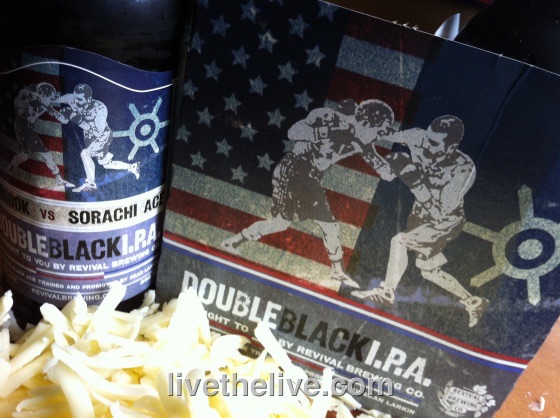Winter is here. It’s time for some serious comfort food.
Years ago, when I received a shipment of venison from my father-in-law, an avid hunter that lives in the Upper Peninsula of Michigan, I knew that although I could certainly use beef for this dish, it would be absolutely stellar with venison. I’ve made it several times since then, with beef, venison, and lamb, with delicious results!
Olive oil
3 red onions, peeled and chopped
3 cloves of garlic, peeled and chopped
3 tablespoons butter, plus extra
3 carrots, peeled and chopped
3 celery stalks, trimmed and chopped
10 oz. baby bella mushrooms, chopped
3 lbs. venison (or beef or lamb), cut into 3/4″ cubes
A few sprigs of fresh rosemary, leaves picked and chopped
Salt and pepper
24 oz. of your favorite lager or stout
3 tablespoons flour
12 oz. freshly grated cheddar cheese
1 1/2 pounds store-bought puff pastry (all-butter is best)
1 large egg, beaten
Pre-heat the oven to 375.
In a large oven-proof pan, heat a few tablespoons of the olive oil. Add the onions and fry gently for about 10 minutes. Turn the heat up and add the garlic, butter, carrots, celery and mushrooms. Stir well, then add the venison, rosemary, and a teaspoon each of salt and pepper.
Sauté on high for about 4 minutes, then add the beer, making sure you take a swig for luck! Stir in the flour and add just enough water to cover. Bring it to a simmer, cover the pan with a lid or foil, and cook it in the pre-heated oven for about 1 1/2 hours.
Remove it from the oven after 1 1/2 hours and stir it a bit to combine all the flavors. Put it back in the oven (covered) and cook another hour, until the meat is cooked and the stew is rich, dark and thick. If it’s still liquidy, place the pan on the stove top and reduce it until the sauce thickens. (You don’t want a soupy stew or you’ll get soggy puff pastry later.) Remove the pan from the heat and stir in half the cheese. Taste it to see if it needs seasoning, but remember there’s more salt coming when you add the rest of the cheese. Set it aside to cool.
Depending on whether your puff pastry comes in sheets or a block, you’ll need to use a rolling-pin to get it into sheets about 1/8″ thick. Butter a good-sized pie dish or an oven-proof terrine, like the one in the photo above. Line the dish with the sheets of pastry, letting the pastry hang over the sides. Pour in the stew, even it out with a spatula, and add the rest of the grated cheese on top.
Use another 1/8″ thick sheet of pastry (or a couple if they’re not wide enough) to cover the top of the pie dish. Lightly crisscross the top with a knife, then fold over the overhanging pieces of pastry over the lid, making it look nice and rustic. Don’t cut or throw any of the extra pastry away! Find a way to use as much as you can, since everyone will want some.
Brush the top with the beaten egg and then bake the pie on the bottom of the oven for about 45 minutes, until the pastry has cooked, and it’s beautifully puffed and golden. Serve with a side of peas (and beer!)
























